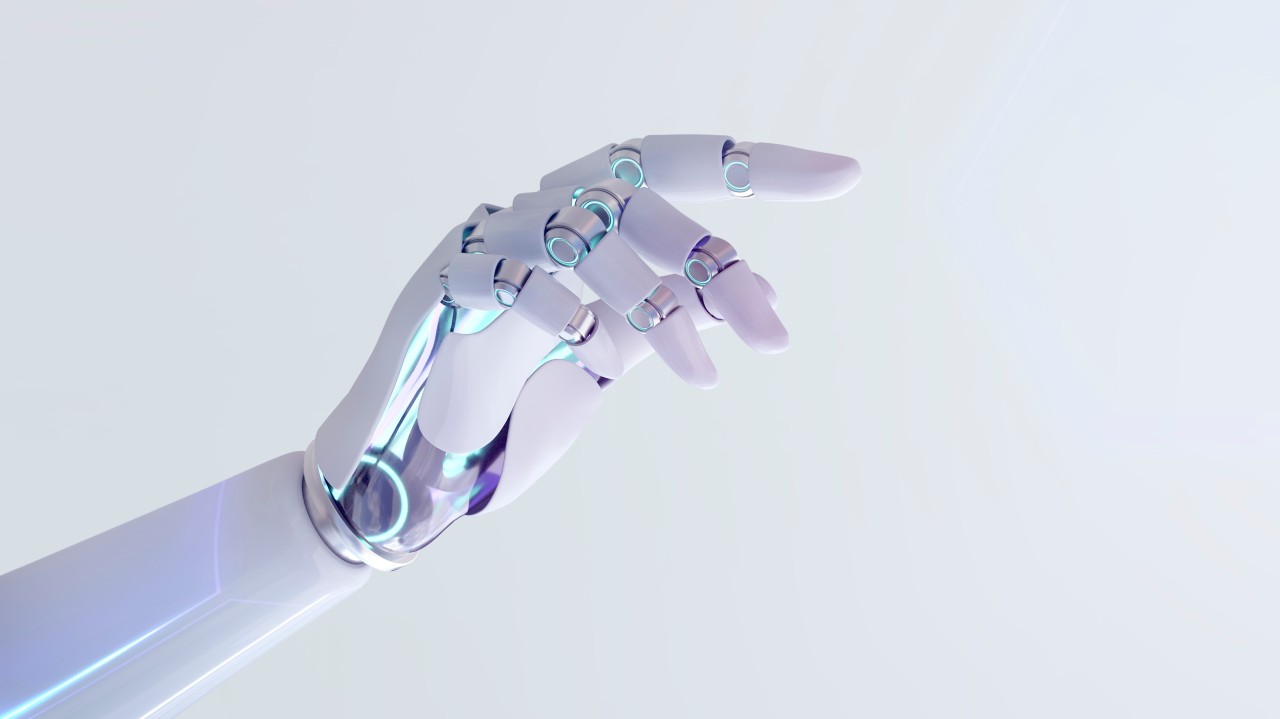Humanoid robots are machines designed to operate like and interact with humans, both physically and behaviorally. Unlike traditional industrial robots that perform repetitive tasks in isolated settings, humanoids are built to navigate dynamic, real-world environments, such as hospitals, warehouses, or public areas.
A key element of their functionality is Embodied AI, a form of artificial intelligence that allows robots to interact with and learn from their surroundings – and respond in real time. This makes them adaptive partners rather than programmed tools.
At TII, we are pioneering Embodied AI in the UAE – through our work with humanoid arms and companion robotic dogs – to help support the region in executing on its bold, AI-driven vision for the future.
Embodied AI for Real-World Progress
With increasing investment and real-world pilot programs, humanoid robotics is rapidly evolving toward broader adoption, with companies like Tesla, Figure AI, Agility Robotics and 1X Technologies all taking differing approaches to their development.
At TII, we are currently experimenting with humanoid arms that can either be used as a standalone limb or mounted on a humanoid torso. They are designed to be used in multiple different scenarios, from moving things around in a construction or healthcare setting, to assembling parts in a factory. We have also been trialing robotic dogs (a humanoid’s best friend) as delivery robots, thanks to their increased stability over complex terrains like stairs, in comparison to humanoids with only two legs.
TII’s innovation in this area is helping to progress next-generation robotics, enhancing efficiency and responsiveness, with technology that can learn, adapt, and collaborate in environments critical to the UAE’s economic and technological transformation.
By integrating advanced intelligence with real-world applications, these robots are designed to support key sectors shaping our future, including logistics, healthcare, infrastructure, construction, public safety, and smart cities. From optimizing supply chains and assisting medical professionals to industrial operations, robots will, in the future, be able to improve productivity, adaptability, and workforce collaboration across the region.
By integrating Embodied AI into our robotics platform, we can also ensure that these systems are not only functional but ethically aligned and socially beneficial. Crucially, they are designed, not to replace humans, but to work alongside them, augmenting capabilities and improving safety.
Driving Next-Generation Robotics
For the UAE, the implications of next generation robotics are significant. In logistics, these robots could, in future, help to streamline operations in massive ports and warehouses. In healthcare, they could assist with patient mobility and routine tasks, easing the burden on medical professionals. In cities, they could assist in emergency situations.
In the course of this work, TII is also fostering an ecosystem of innovation. By engaging AI researchers, developers, and policymakers, the Institute aims to create not just technology, but the regulatory and ethical framework for safe deployment. Events showcasing live demonstrations – from humanoid arms working in warehouses to robotic dogs delivering medical supplies – underscore TII’s commitment to positive, real-world impact.
The Future of AI Collaboration
By anchoring robotics in the principles of safety, intelligence, and real-world deployment, TII is ensuring that Embodied AI becomes a transformative force that empowers people, advances industries, and strengthens national progress.
As the UAE continues to redefine what’s possible in AI and robotics, TII invites innovators, policymakers, and the public to be part of this transformation. Humanoid robotics is no longer science fiction – it’s the next chapter in intelligent automation. Let’s lead the charge.
Written by: Danilo Caporale, Senior Director, Autonomous Robotics Research Center at TII


